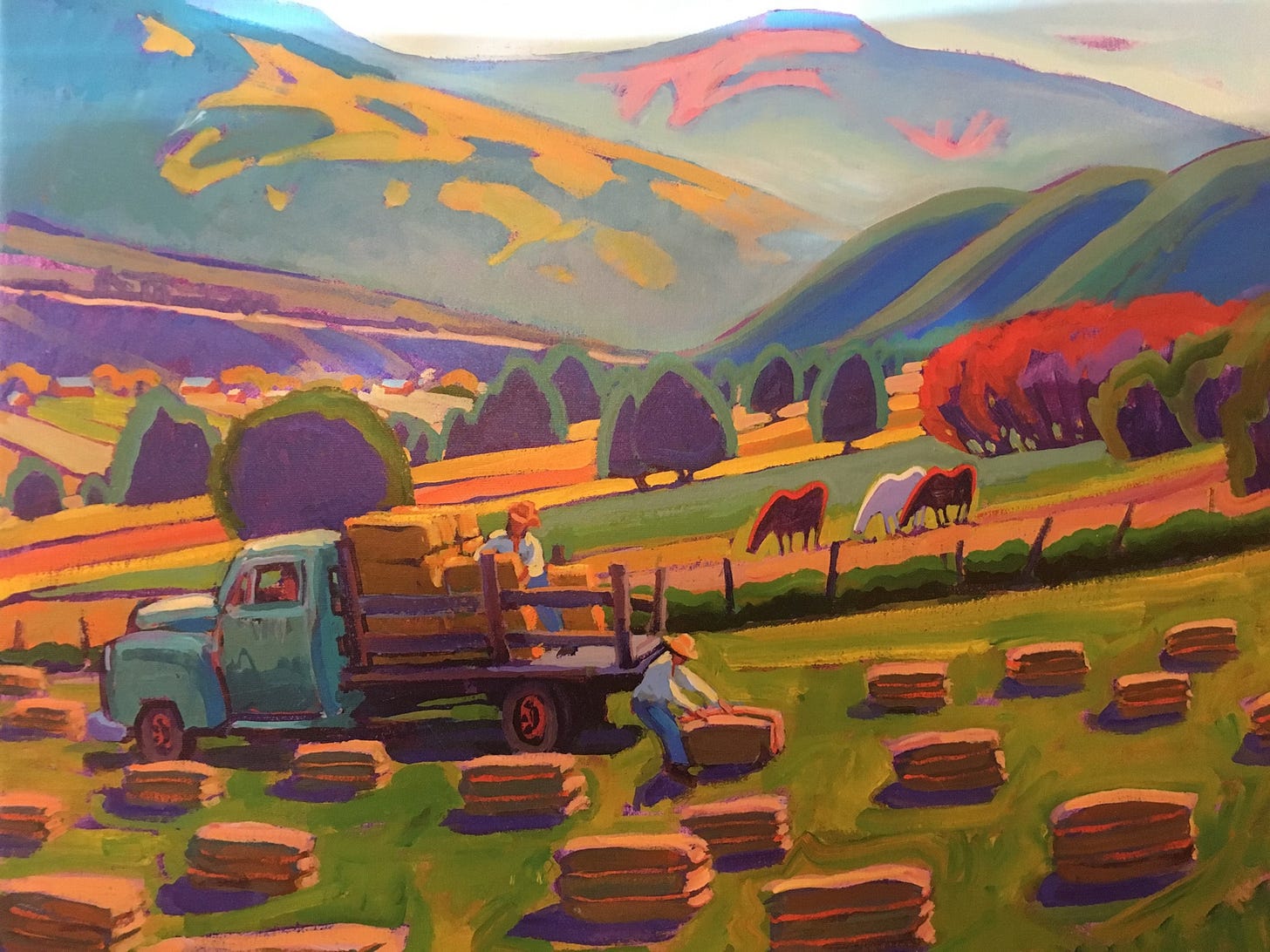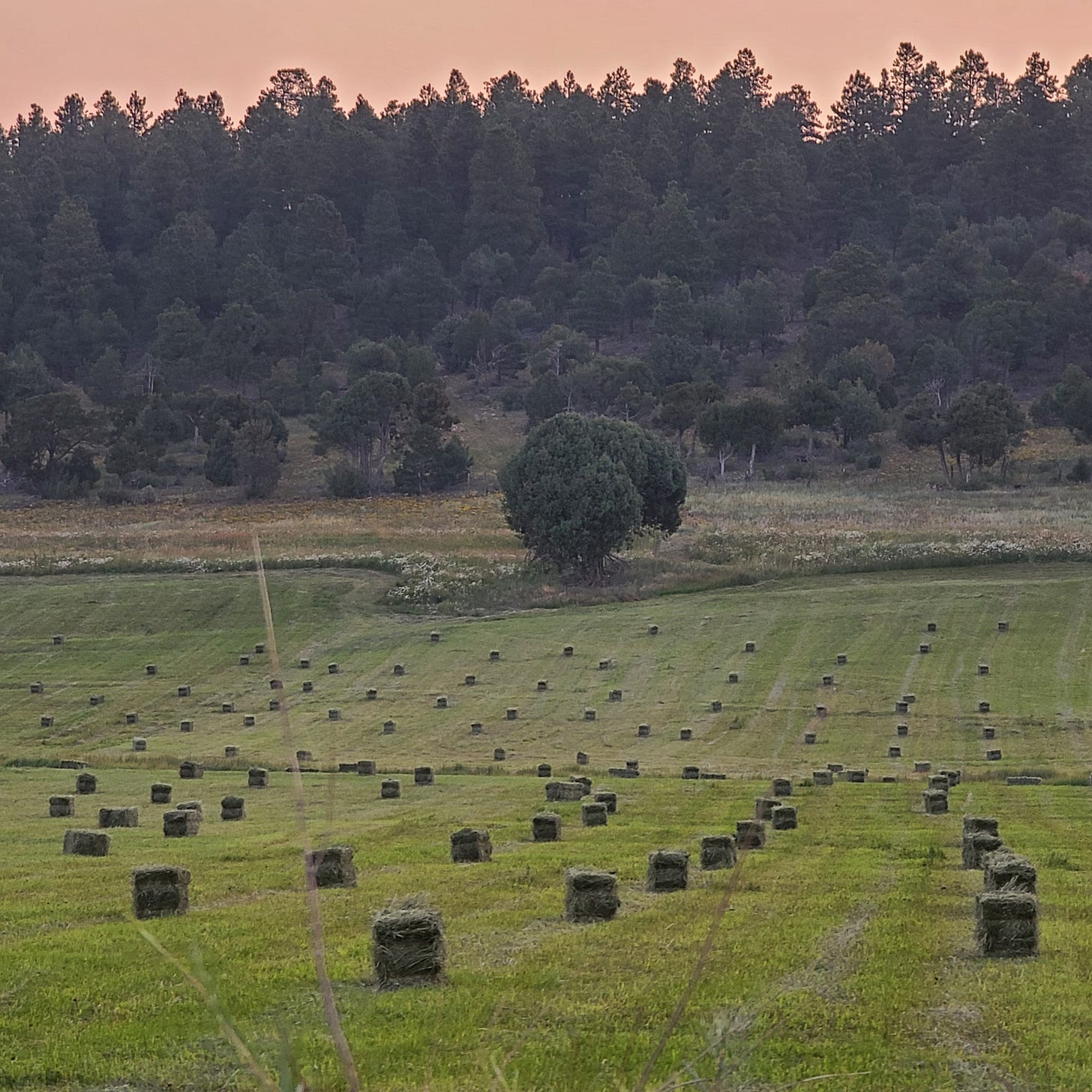Most people know the Land of Enchantment, if they’ve ever been here at all, only through their rolled-up car windows as they blaze across New Mexico on I-40 on their way from someplace to some (other) place. That was once me. But an invitation to speak at a New Mexico health conference in Taos in 1979 changed all that.
At the time, I was responsible for the federal government’s anti-tobacco campaign as a Program Director in the Information Projects Branch which was part of the Office of Cancer Communication at the National Cancer Institute (NCI). I had been recruited there after two years working with former asbestos workers in Tyler, Texas whose workplace-based asbestos exposure, coupled with their tobacco use, made them 92 times more likely to contract lung cancer than those with neither asbestos nor tobacco smoke exposure. Our successes there caught the attention of NCI officials who offered me a position to help influence national policy and behavior around tobacco back when smoking was still allowed on airplanes and there was no such thing as a nonsmoking section in any restaurant.
As I was being recruited to move to Bethesda, MD and the National Institutes of Health, I was told that I would have a budget of around $250,000 to work with, which in 1978 was no small change. But between the job offer and my move to DC, something remarkable happened. My soon-to-be Big Boss, Joseph Califano, the Secretary of the Department of Health, Education and Welfare in the Carter administration, quit smoking. And like many new ex-smokers, he radiated a zeal for reform – for really making a dent in this deadly addiction – that resulted in my budget being increased before I arrived to $9 million and, in my second year, to $17 million. With that largesse, we created interventions that helped over 10% of all physicians and 20% of all dentists nationwide initiate smoking cessation efforts with their patients. We produced a free self-help quit smoking guide that was ordered by millions of smokers yearning to quit, and then millions more. We helped develop and support a week-long nationally televised quit smoking workshop on ABC-TV’s “Good Morning America” that resulted in fourteen million more smokers ordering our guide and following the televised workshop, the largest single health promotion program ever attempted by a national television network. All of this and I was not yet 30 years old.
These efforts brought dozens of invitations to speak around the country as well as an invitation to give two presentations at the Fourth World Conference on Smoking Or Health in Stockholm, Sweden. One of those invitations was to give a keynote address at the New Mexico Department of Health’s annual conference in Taos, NM in the late spring of 1979. I was whisked north from Albuquerque to Taos by shuttle bus on the usual route to the conference while I worked on the speech, barely looking out the window. However, after my speech the next day, a kind, beautiful and flirtatious young health educator offered to drive me back to the airport since I had nine hours before my flight. When we climbed into her vintage cherry red pickup truck to leave, she handed me a fat joint of her best homegrown (not ALL smoking is bad, after all) and said "I'm going to take you back a different way than the highway you came here on. Get ready to see just how beautiful this sacred state (of place and mind) can be." And then she turned south on the High Road to Taos and my worldview changed. Forever.
We took our very spicy/sweet time driving through the Carson National Forest, and then through one small Hispanic village after another -- Placita, Vadito, Rodarte, Penasco, Chamisal, Las Trampas, Ojo Sarco, Truchas. And, at the altitude (cranial and topographical) that we were, I was blown away by how green everything was. If I had not been a flatlander, I would not have been because we were in the alpine area of the state, where the Rocky Mountains start. A place where snowmelt-fed mountain rivers, monsoonal rains and millennia-old acequias (irrigation ditches dug by the Tribal people and then expanded by the first Spanish settlers) made these backroads a verdant paradise, with the smells of sage, cedar and piñon on the dry, cool breeze making me feel like I was at High Mass. In fact, I was. In a church it would take me too many more decades after that high mountain ride to relocate to and revere.
The higher we got, the greener everything was, the more open the turquoise skies became, the more expansive the views. And, just as she had planned, the young woman pulled off the road at dusk and took me to her favorite spot outside Truchas to witness the most dramatic sunset of my young life. Then, in a too short while, she dropped me off at the Albuquerque airport for my flight back to D.C., smiled deeply and drove out of my life, having gifted me with a new and wondrous sense of majestic and magical possibility. I knew right then (just as she knew) that I would return.
It took me over a decade to move to New Mexico, for two of the most productive years of my professional life, when the New Mexico Department of Health recruited me from CDC in 1991 to establish the first research unit within any state’s health department to study substance abuse as a public health problem. By chance, two Tennessee friends had moved to New Mexico at around the same time, purchasing an abandoned commune on Llano de la Llegua outside of Penasco and inviting me to help them build their new home on the weekends. Those two years in Santa Fe, with many weekends on the Llano, really solidified my love affair with New Mexico. I might have stayed, consummating my marriage to this Enchanted Land thirty years ago, had not a downstream neighbor of my Tennessee farm (around 150 acres on the Natchez Trace Parkway south of Nashville that I bought when I was a nineteen year old junior at Vanderbilt for the complete price of $13,000) poisoned my creek. forcing me to leave New Mexico, return to Tennessee and bring him to justice.
Thankfully, though, the visits to Llano de la Llegua continued. My home away from home became a small cabin on my friends’ land and every vacation but one over the next three decades was spent in the solitude and splendor of the Hidden Valley in the shadow of Jicarita Peak. I am sure that, on those many visits, my desire to live here permanently began to take shape. But even into the early 2000s, it did not take form.
In late August of 2002, when my decade long dance with federal reefer madness weasels began, my focus became one of personal survival and the defense of my Tennessee farm which the feds most dearly wanted to confiscate. That decade (during which the federal drug worrier weasels failed to prevail) was followed by another decade to rebuild my life, to reimagine myself as an organic blueberry and blackberry farmer and, in so doing, to spiritually surpass everything I had ever been before.
So, with all that, I came to be eating breakfast one late morning at the Sugar Nymphs cafe in Penasco in the summer of 2018 on yet another short vacation to the shadow of Jicarita. On that morning, there on the wall of the café next to my table, was this painting by Leigh Gusterson, a renowned Taos County artist whose Light Mountain Gallery was just down the road. The painting is entitled "It's All About The Hay". I don't know but there was something in the clarity of the colors, the wide expanse of hayfields at harvest and the hardworking people of the paradise represented in that painting that called to me and said: “Good morning, Bernie. This IS your wake-up call." For the first time in my four decade flirtation with these New Mexican mountains, my eyes and my heart opened wide and I fully embraced this possibility.
With that, I returned to Tennessee and put my half century deep holler home there up for sale. (And, gracias a la Diosa, enough of it sold within a minute to make this dream come true.) Two years later, I experienced my own first timothy/clover hay harvest on my newly acquired Ranchito Feliz Destino, a bountiful harvest made possible with the help of my mayordomo and his grandsons who rallied around me, an autumn chicken Anglo newcomer, to make my first harvest a successful one. The first of four hay harvests, so far, that I have experienced with many more (I hope) to come.
So glad that all y'all (and many more in the future, I hope) will be here for this ongoing glorious ride. Or rather, for among many other glorious things, the future slow crawls through my hay fields as the heavy emerald green and gold bales get loaded on folks' pick-ups and flat beds to be carried home to their hungry horses and herds, allowing me to remain of service to some land and to some neighbors in my mid 70s, but now with a pitchfork in my hand instead of a pen or a pail.
Happy mid winter, now and here, as the snows accumulate on La Montana while waiting for summer to melt and flow through our ancient acequias to water our hay fields. Take it from me, here and now. In the Land of Enchantment, I now know that the higher you get, the greener things are. And, no matter where you are, the land beneath your feet is enchanted too, if you can just be fully aware and appreciate it.






yes, I tell myself that wherever I am is enchanted and can usually find the beauty. returning to central texas after lush summer spectacular fall and icy lacy snow covered winter has been particularly difficult. and I too anticipate destino feliz. see you next fall for harvest.
Very beautiful. I'm glad you were awakened by the beauty's of our lands. I am so grateful to be born in an area that is so filled with magic and nature.